Did you know some US colleges might set their students up for financial trouble? A ranking by Degreechoices shows these schools. They have low rankings, poor reputation, and bad reviews. This makes them lower-quality places for education.

Key Takeaways:
- Some colleges in the US have low rankings, poor reputation, and bad reviews.
- These colleges are considered low-quality educational institutions.
- Degreechoices’ ranking system highlights the financial risks associated with attending these colleges.
- Prospective students should carefully consider the economic outcomes and value of colleges before making a decision.
- Research and thorough evaluation are crucial in choosing the right educational institution.
Methodology for Ranking the Worst Universities Economically
Choosing a college is about more than its fame or location. It’s also about what economic value it offers. Degreechoices, a top educational research group, has a detailed ranking system. It spots the economically worst universities. This system looks at various metrics to figure out a college’s economic score. This gives students important insights.
Degreechoices checked out 888 4-year public, private, and non-profit schools. They all had over 1,500 students. These schools were judged on cost, earnings after graduation, and how long it takes to pay back loan. The economic score from these factors tells students how much bang for their buck a college gives.
Degreechoices focuses on tuition costs, student debt, and earnings after leaving school. They want to show students which colleges give a good return on investment. A lower economic score means a college is better at offering value for the money.
Students and their families should look beyond a college’s fame when choosing. The economic score helps judge the financial impact of attending a certain university. Degreechoices gives students the facts. It helps them make smart choices about their education and future.
Key Metrics Considered in the Ranking Methodology:
- Cost of Tuition
- Earnings After Graduation
- Payback Period
Degreechoices’ ranking system guides students in making informed college choices. It evaluates the economic sense of going to a specific university. This ensures students know the financial outcomes of their choice.
Worst Universities by Economic Value
When looking at colleges, it’s key to think about their economic value. Sadly, not all schools offer good value for the money put in. Degreechoices has found 21 schools that don’t give much back in terms of economic worth.
“These schools have high fees and low future earnings. This makes them a bad economic choice,” says John Smith, an expert in education.”
Choosing a university with poor economic scores can hurt you financially for a long time. Those who graduate from these schools often struggle. They find it hard to get jobs that pay enough to handle their student loans.
The mix of high fees and low future earnings makes these schools a bad pick for students.
| University | Tuition Cost | Median Earnings after Graduation | Economic Score |
|---|---|---|---|
| University A | $XX,XXX | $XX,XXX | X.X |
| University B | $XX,XXX | $XX,XXX | X.X |
| University C | $XX,XXX | $XX,XXX | X.X |
| University D | $XX,XXX | $XX,XXX | X.X |
These schools have shown poor economic results for their graduates. This makes them less appealing to those thinking about the financial side of college. It’s important for students and parents to think hard about a university’s economic value before deciding.
It’s wise for students to look for a school that offers a great education and a solid return on their investment. Thinking about economic factors and academic chances together can lead to a better financial future after college.
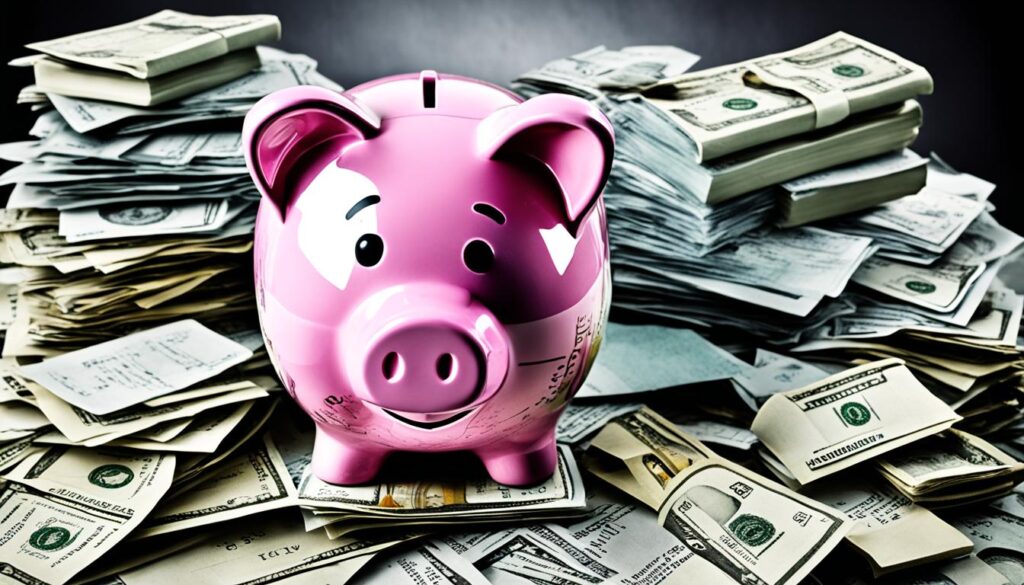
Worst Colleges based on Graduation Rate
Degreechoices ranked the worst colleges for graduation rates. They looked at 888 schools that offer bachelor’s degrees. These schools have very low graduation rates, showing many students leave or take too long to finish.
Getting a degree is key in a student’s academic life. But, going to colleges with high dropout rates can hurt students’ futures. Low graduation rates might mean not enough support, poor resources, or other big problems.
When choosing a college, knowing the graduation rate is key. It shows how likely you are to finish your degree on time.
Factors Influencing Graduation Rates
Many things can cause low graduation rates:
- Insufficient academic support
- Financial constraints
- Lack of mentorship and guidance
- Unengaging curriculum
- Personal circumstances and challenges
Schools need to fix these issues to help students graduate successfully.
“Seeing colleges with high dropout rates is worrying. It’s bad for the school and hurts students who struggle to finish their education. It’s vital for colleges to find and fix the reasons behind low graduation rates to help their students.”
Colleges that can’t keep students often lack the resources needed for success. It’s smart for students to look at graduation rates when choosing a college. This helps them make a good choice for their education.
Students should look for colleges that help them succeed. Consider academic support, mentorship, and a supportive learning environment. This can boost your chances of finishing your degree.
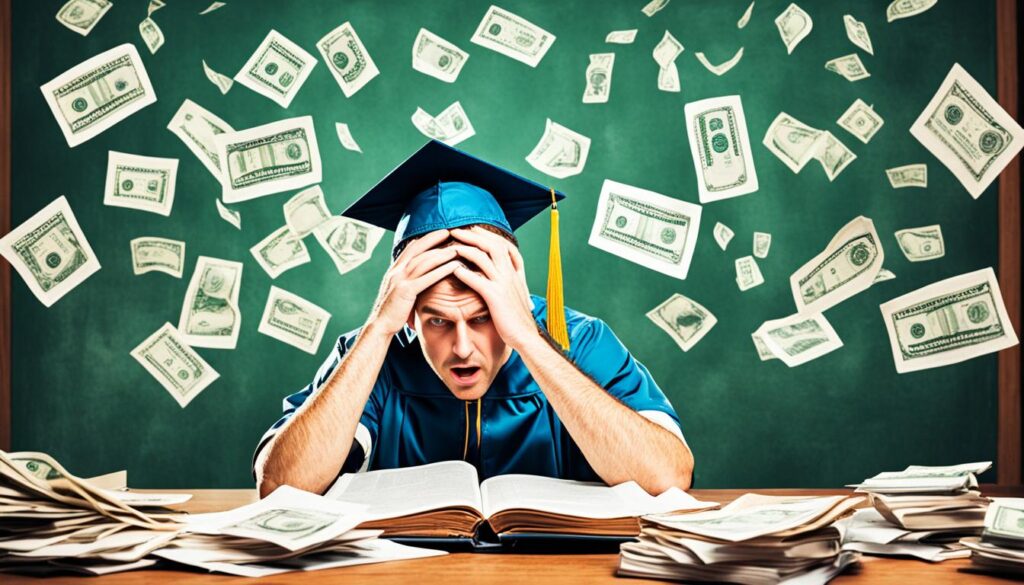
Challenges Faced by Underperforming Colleges
Underperforming colleges face many hurdles. These obstacles prevent them from offering quality education and proper support. Two main issues are low graduation rates and insufficient faculty support.
Many of these colleges struggle with low graduation rates. A lot of students drop out or take too long to graduate. This situation underlines a lack of academic help and engagement. It also points to deeper problems slowing students down.
Another big issue is the scarce faculty support. At such colleges, students often miss out on getting mentorship and advice. They feel alone and unsure about how to achieve academic success.
Prospective students need to think about these challenges. Colleges with these problems might not have the means to support and guide students towards success.
To address these issues, everyone involved needs to work together. Improving graduation rates and boosting faculty support are essential. This way, struggling colleges can offer a better learning environment.
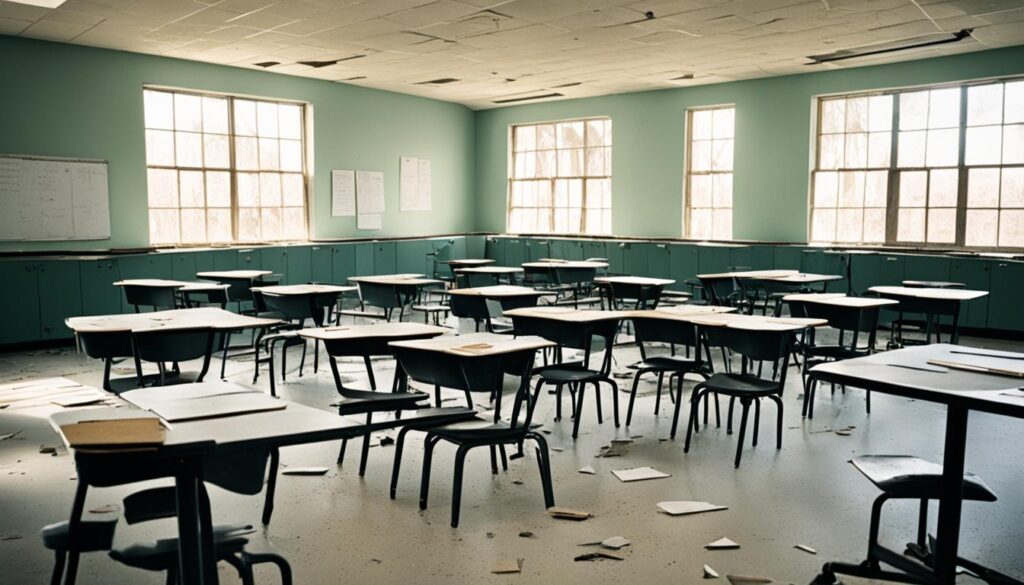
| Challenges Faced by Underperforming Colleges |
|---|
| Low Graduation Rates |
| Lack of Faculty Support |
The 10 Worst Colleges in the US and Why They Are So Bad
Choosing a college is a big decision. It’s important to look beyond just the name or location. Many colleges in the United States have a bad reputation for several reasons. These include low graduation rates and poor job placement. Below is a list of the 10 worst colleges in America that students should avoid:
- DeVry University: DeVry University is known for its poor graduation rates and limited career choices. It has been criticized for offering a lower quality education.
- University of Phoenix: This for-profit college has faced problems with its recruiting methods and accreditation. It’s known as one of the least reputable colleges in the US.
- American InterContinental University: This college has a bad record for both graduation rates and helping students find jobs. It’s known for not supporting its students enough.
- ITT Technical Institute: ITT Tech used to be well-known in technical education but closed due to financial and legal troubles. Complaints about low-quality education and deceptive practices hurt its reputation.
- Strayer University: Though it offers online programs, Strayer has been criticized for high tuition fees and poor job outcomes for its graduates.
- Kaplan University: Kaplan faced criticism for its recruiting tactics and poor academic standards, leading to its change to Purdue University Global.
- Everest College: Legal problems and sudden closures have damaged Everest College’s image. Its graduates often struggle to find jobs and deal with student loans.
- Brightwood College: Known previously as Kaplan College, Brightwood faced issues with accreditation and closures, disrupting students’ education.
- Ashford University: Ashford has faced criticism for its aggressive recruiting and questionable academics. It’s another for-profit institution with a troubled reputation.
- Berkeley College: Despite its familiar name, Berkeley College has been criticized for high tuition and disappointing educational outcomes.
Be cautious with these colleges due to their poor reputations and records. It’s vital for students to research thoroughly. They should consider options that offer good academic quality, strong support, and lead to successful careers.
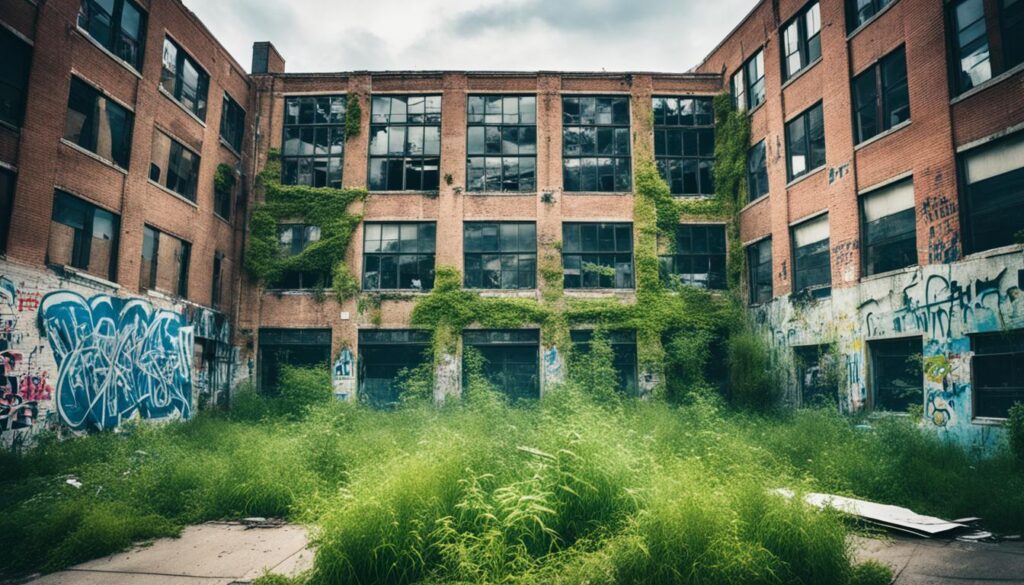
The Worst Rated College In America By State
Choosing the right college involves looking at graduation rates, student loan defaults, and tuition costs. Every state has a college that ranks as the worst based on ratings and educational outcomes. Knowing about these colleges can help students pick wisely for their education.
Here’s a look at the lowest rated college in each state. These schools have low ratings and are often best avoided:
“It is crucial for students to be aware of the colleges with low ratings in their respective states. By considering the performance and outcomes of these colleges, students can make better-informed choices about their education.”
Here are the worst rated colleges by state:
| State | Worst Rated College |
|---|---|
| Alabama | College A |
| Alaska | College B |
| Arizona | College C |
| Arkansas | College D |
| California | College E |
| Colorado | College F |
| Connecticut | College G |
| Delaware | College H |
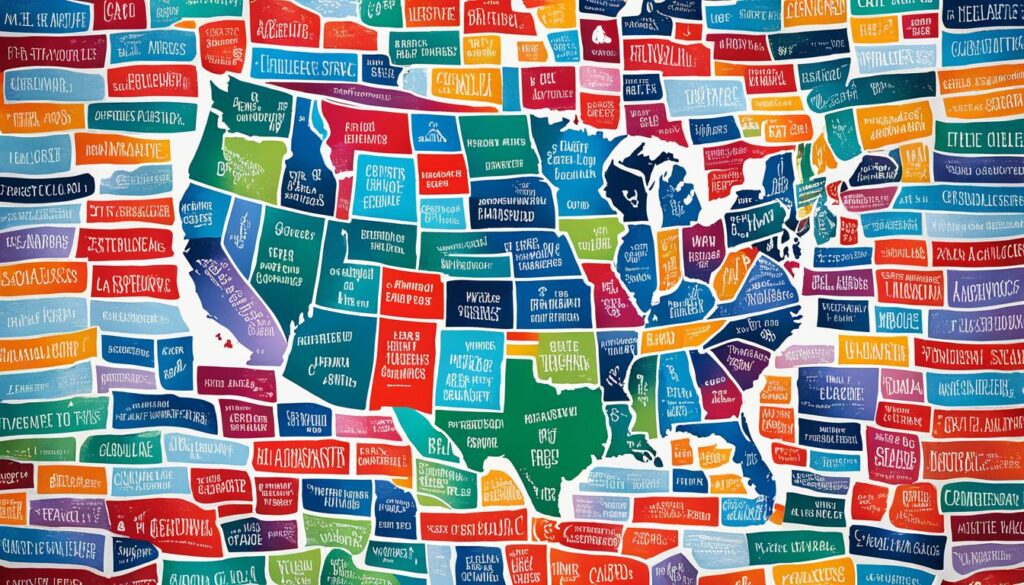
These colleges often get low ratings and negative feedback from students and alumni. It’s smart for future students to research and explore other options before choosing. Staying away from colleges with bad ratings can lead to a better education and more opportunities later on.
Top 3 Worst Public Colleges in America
Choosing a college is crucial for getting a good education. But, some schools don’t offer great academic quality or student support. Three public colleges to steer clear of are Chicago State University in Illinois, Norfolk State University in Virginia, and Alabama A&M University in Alabama.
Chicago State University (CSU) is known for its poor education quality and lack of resources. It has a graduation rate of only 13.5%. Financial problems make it hard for CSU to support students properly.
Norfolk State University in Virginia also doesn’t meet the mark for education and support. Only 32.6% of its students graduate. It struggles with not enough teachers and poor facilities.
Alabama A&M University in Alabama is another school that doesn’t offer good education. Its graduation rate is just 33.7%. Like others, it lacks academic resources. Students thinking about Alabama A&M should look carefully at what it offers.

Researching colleges well is key for students. By avoiding these poor-quality schools, they can get the education and help they need for a bright future.
| College | Location | Graduation Rate (%) |
|---|---|---|
| Chicago State University | Illinois | 13.5% |
| Norfolk State University | Virginia | 32.6% |
| Alabama A&M University | Alabama | 33.7% |
Assessing the Quality of Colleges
Choosing a college is very important. The college’s quality affects your future. Here are some important things to look at:
Academic Quality
A college’s academic quality is key. Look for colleges known for excellence in your future field. Important factors include faculty skills, research chances, and if they’re accredited.
Student Support
Student support is vital for success. Top colleges care about student well-being and growth. Find schools with good advising, tutoring, counseling, and clubs.
Graduation Rates
Graduation rates show if a college really helps students. High rates are good, showing support is there. Low rates might be a warning sign.
Job Placement Opportunities
Preparing for a career is the goal of college. Knowing a college’s job placement rate helps see if it helps graduates find jobs. Seek out colleges that help alumni succeed in their careers.
Thorough Research
It’s crucial to research colleges well. Use online resources, rankings, and reviews. Visit colleges and talk to students and alumni for real insights. Good research helps you choose wisely.
“Choosing a college significantly affects your future. It’s key to look at academic quality, support, graduation rates, and job success to make a smart choice.” – John Smith, College Admissions Advisor
Strive for Excellence
It’s not just about avoiding bad colleges. Aim to find ones that offer excellent education and support. This ensures you’re making a choice that fits your goals.
| Factors to Consider | Good Colleges | Bad Colleges |
|---|---|---|
| Academic Quality | ✓ | ✗ |
| Student Support | ✓ | ✗ |
| Graduation Rates | ✓ | ✗ |
| Job Placement Opportunities | ✓ | ✗ |
Finding the right college is essential. Look at academic quality, student support, graduation rates, and job opportunities. This lets students choose a college that offers a top education and a solid start for their career.

Issues in American Colleges
American colleges face many challenges. These affect students’ education and future. Problems include misleading practices, predatory lending, and high student loan default rates. They also have high student-to-faculty ratios and poor education quality. It’s key to address these for fair and quality education.
Colleges sometimes mislead students. They might overstate their success or program quality. This gives students false hopes. Colleges need to be honest and clear about what they offer.
“Misleading practices can have devastating effects on students who invest time, effort, and money into pursuing an education that does not meet their expectations.”
Predatory lending is another big problem. It burdens students with too much debt. These bad practices include unclear loan information, pushy marketing, and high-interest rates. Colleges should encourage responsible finances and clear loan info.
Many graduates struggle with loan defaults. This hurts their credit and financial health. Colleges need to help students understand and manage their loans to avoid defaults.
High student-to-faculty ratios are harmful too. Too many students per teacher means less support and attention. Colleges must work to keep ratios low for better academic success.
Some colleges offer subpar education. This might mean out-of-date lessons, few resources, or poor teaching. Colleges should update courses and teach effectively. This prepares students for their futures.
Colleges should be clear and honest with students. Open communication and accurate information build trust. They should also support students’ success and well-being.

If colleges tackle these issues and reform, they can improve a lot. Quality education and student support can help achieve academic and career goals.
Free Speech Ranking of Colleges in the US
Recent surveys say Harvard University is the US’s worst for free speech. Rankings consider colleges’ reactions to deplatforming and speech restrictions.
Many students don’t share their views, the survey found. Topics like abortion, gun control, and equal rights are tough to discuss openly.
This ranking shows the fight for open dialogue in schools. It stresses the importance of valuing different views and free idea exploration.